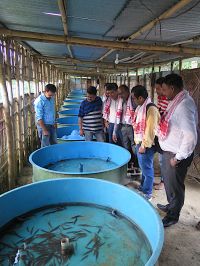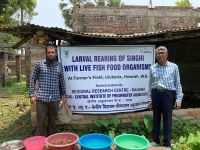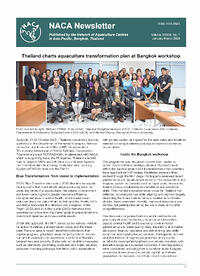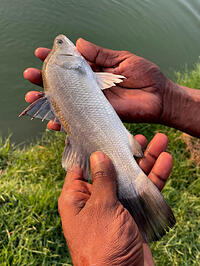Access to quality seed has long constrained aquaculture of magur, a high-value indigenous catfish prized across north-eastern India. Wild stocks have declined, yet demand continues to rise. In Nalbari district of Assam, scientists and farmers have created a solution. ICAR-Central Institute of Freshwater Aquaculture worked with local farmers to establish more than 25 magur hatcheries using innovative fibreglass-reinforced plastic designs suited to flood-prone conditions. Farmers received training in captive breeding, hormone-induced spawning, and larval rearing using specialised feeds. Individual farmers now produce 300,000-500,000 fry per season, earning substantial income while supplying seed across multiple districts. The model shows how targeted capacity building, appropriate technology, and farmer-centred interventions can transform indigenous fish seed production from a critical bottleneck into a thriving regional enterprise. Approximately 70 farmers now actively supply magur seed where scarcity once limited aquaculture expansion.
Rearing stinging catfish larvae has long challenged Asian fish farmers, as young catfish naturally prefer live prey over manufactured feeds. A West Bengal farmer has developed a method that produces one million catfish fry monthly using Moina zooplankton, as the sole food source. After training at ICAR-CIFA research station, Mr Imran Molla established 25 large tanks to mass-produce Moina using simple ingredients like waste bread and mustard oil cake. He segregates catfish larvae by age into separate compartments and feeds each group appropriately sized Moina. The larvae thrive on this natural diet, reaching sale size in 30 days with high survival rates. This method requires less water management than manufactured feeds, reduces disease risk, and generates substantial income. The farmer's success demonstrates how combining scientific training with local innovation can solve critical bottlenecks in small-scale aquaculture.
In this issue:
- Thailand charts aquaculture transformation plan at Bangkok workshop.
- Report of the 3rd High-Level Meeting on Aquaculture Transformation in Asia and the Pacific Region.
- AquaHub Vision Workshop: Setting a direction.
- AquaHub private-sector engagement discussion at Third AQUADAPT Peer Learning Event.
- Veterinary training programme: Fundamentals of farm health management in aquaculture.
- Reported aquatic animal diseases in the Asia-Pacific region during the first and second quarters of 2025.
- PhD scholarships in marine sciences: Shanghai Ocean University PhD Programme 2026.
In this issue:
- Integrating fish farming with ducks and poultry in Meghalaya
- Small indigenous fish species: A source of nutritional security
- A short note on two new instances of aquaculture species and system diversification in Purba Medinipur, West Bengal, India
- Adding knowledge to the seed production process of giant featherback in captivity
- Local knowledge and practices in Asian seabass nursery to grow-out culture in Andhra Pradesh
- NACA Newsletter
Asian seabass has emerged as a promising alternative to shrimp farming in coastal Andhra Pradesh. This article documents the complete production cycle practiced by farmers in Krishna, Eluru and West Godavari districts, from wild egg collection to market-ready fish.
The production process spans 14-16 months across multiple phases: two nursery stages transform eggs into fingerlings, a pre-grow-out phase develops juveniles to 100-200 g, and a final grow-out period produces fish weighing 3-4 kg. Farmers rely heavily on live feed, primarily small shrimp and tilapia, with feed conversion ratios around 6:1.
While the species offers advantages such as fast growth and salinity tolerance, farmers face challenges including fluctuating export prices, rising feed costs and disease outbreaks. The lack of species-specific therapeutics further complicates disease management. Most harvested seabass currently reaches export markets through Kolkata and Chennai, though opportunities exist for domestic value-added products.











